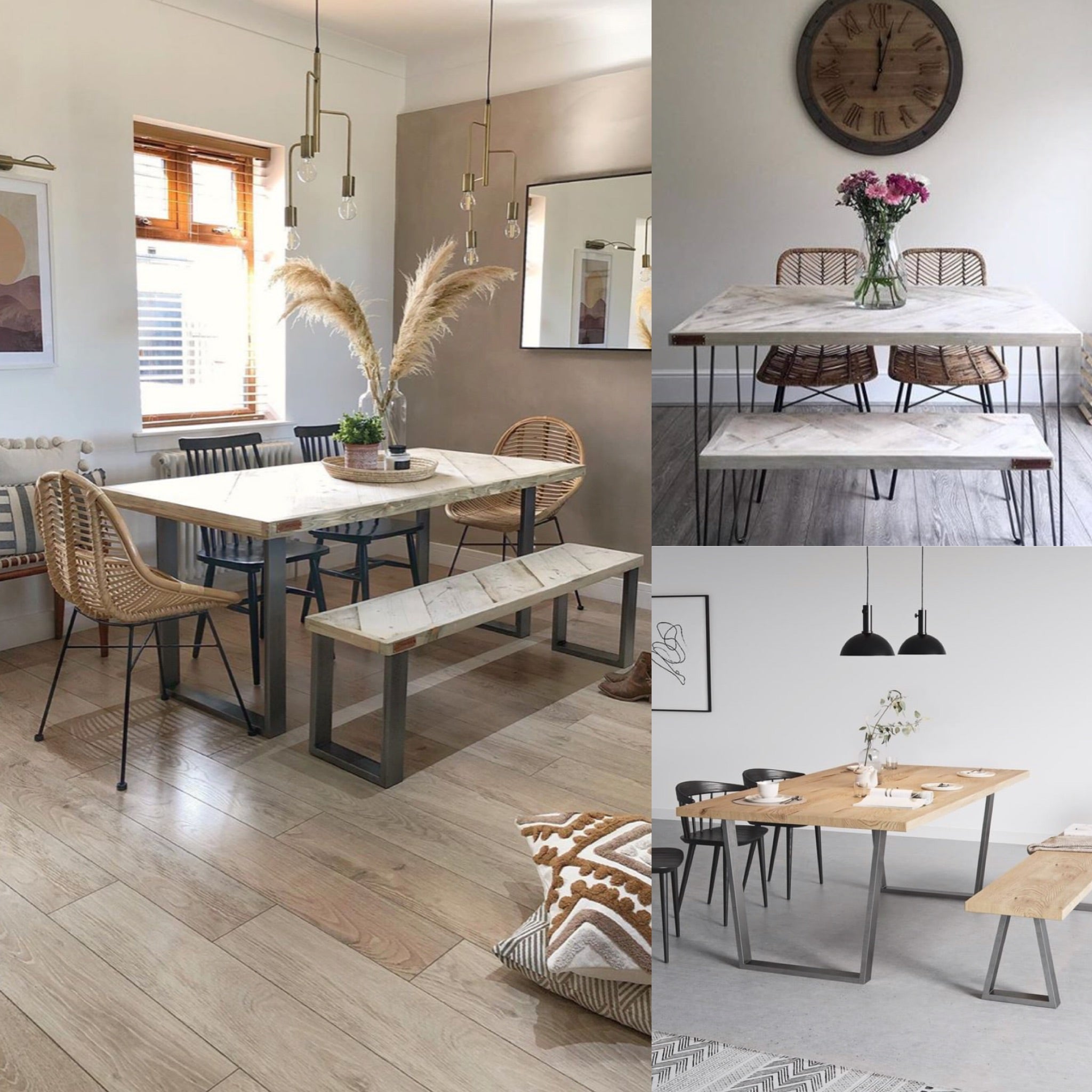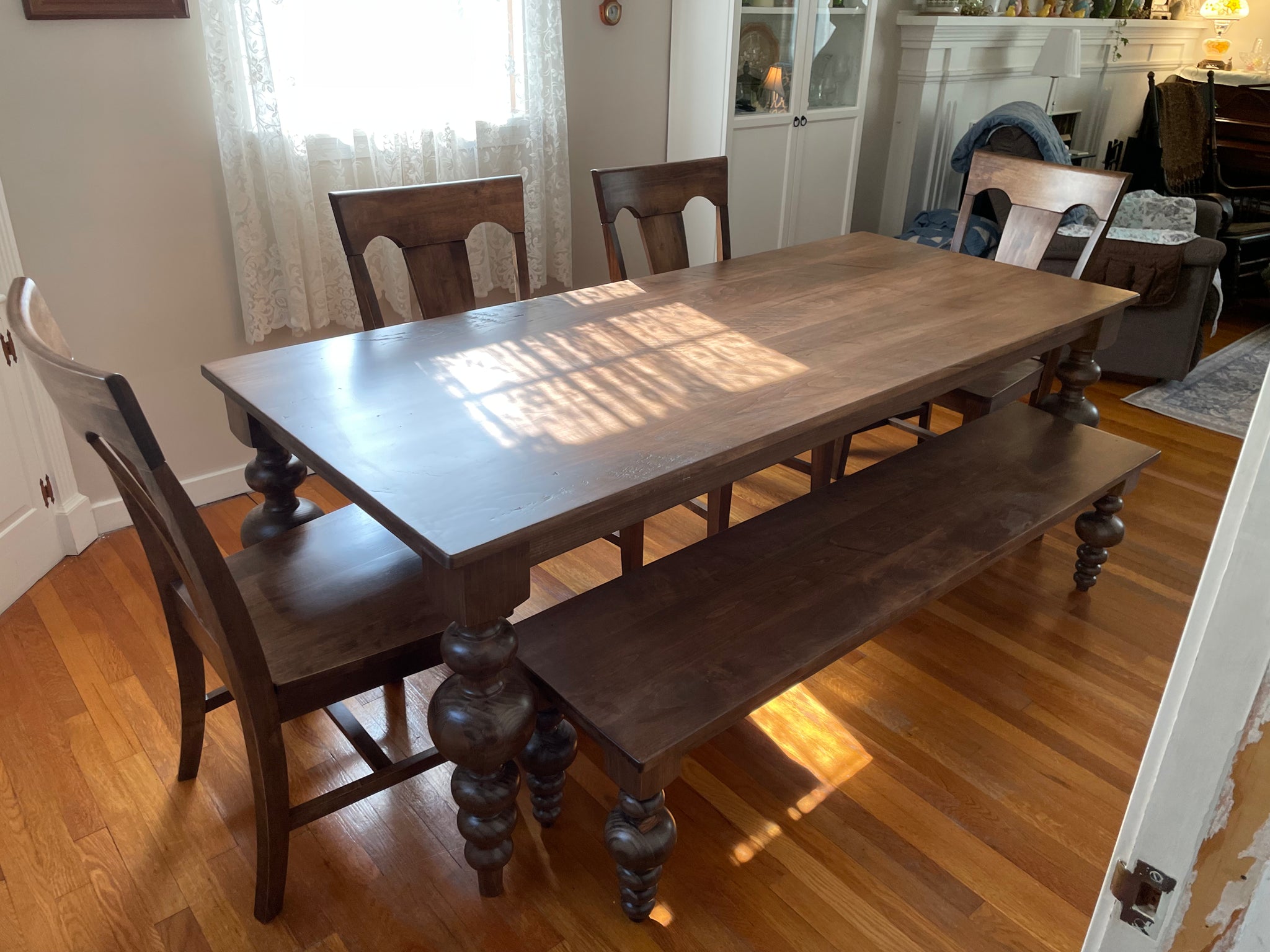Find the Ideal Dining Room Table Legs for Any Interior Design Style
Find the Ideal Dining Room Table Legs for Any Interior Design Style
Blog Article
From Conventional to Modern: Discover the Perfect Eating Space Table Legs for Your Design
While classic layouts such as cabriole and turned legs stimulate a sense of ageless refinement, modern designs like barrette and geometric alternatives offer a possibility for striking visual passion. As you take into consideration these elements, the concern continues to be: just how can you effortlessly integrate these varied leg designs to develop a harmonious eating experience?
Recognizing Table Leg Styles
The variety of dining-room table leg designs can dramatically influence both the aesthetics and capability of the area. Each leg design contributes distinct visual aspects and practical features, dealing with varied design choices and usage needs. Comprehending these styles is crucial for choosing the right eating table that lines up with your overall indoor layout vision.
As an example, conical legs provide a tidy, traditional appearance that can enhance a space's sophistication, while stand bases provide stability and make best use of legroom, making them ideal for smaller areas. Hairpin legs, a trademark of mid-century modern design, present a commercial flair, permitting for an airy, open feel. In a similar way, trestle legs evoke rustic appeal, offering robust support and a sense of eternity.
Furthermore, the selection of products plays a significant duty. Wood legs can bring heat and appearance, whereas metal options often convey a streamlined, contemporary vibe. Ultimately, recognizing table leg designs is essential for creating a cohesive eating location that mirrors individual design while guaranteeing practicality and comfort. By thoughtfully thinking about these components, you can improve both the visual and useful appeal of your eating area.
Standard Table Leg Options
When choosing dining-room table legs, conventional choices commonly personify timeless beauty and workmanship. These layouts reflect a rich heritage and a commitment to top quality, making them excellent for those that appreciate traditional visual appeals.
Among the most renowned conventional leg designs is the cabriole leg, identified by its stylish curved form. This style usually features decorative makings and is most frequently found in Queen Anne and Chippendale furnishings. One more preferred alternative is the transformed leg, which boasts a series of smooth, rounded forms that provide a timeless appearance while preserving stability.
Additionally, the straight leg, while easy, offers a tough and basic framework that can blend seamlessly with a selection of tabletop designs. For those attracted to ornate detailing, claw-and-ball feet legs evoke a feeling of magnificence and can act as a sensational focal point in any kind of dining area.
Lastly, pedestal bases, although not strictly legs, give an alternate conventional option that permits ample legroom and can be wonderfully carved. Each of look at here now these traditional leg designs adds to the total ambiance of a dining-room, marrying function with aesthetic charm.

Modern Table Leg Designs
Modern table leg designs supply a varied variety of styles that highlight clean lines and innovative materials. These styles usually focus on functionality while serving as striking focal factors within an eating space. Minimal looks prevail, with legs crafted from materials such as metal, glass, and engineered wood, which contribute to a contemporary and ventilated feel.
One prominent layout is the barrette leg, characterized by its slender, tapered structure that supplies stability without overwhelming the tabletop (dining room table legs). This design is often located in mid-century modern furnishings and can effortlessly complement numerous eating table forms. Another trend is making use of geometric forms, where legs may tackle asymmetrical or angular types, adding aesthetic passion and a touch of virtuosity

Blending Designs for Distinct Spaces
Frequently, property owners seek to produce distinct dining rooms that mirror their personal design by blending various style aspects. This method permits the incorporation of varied aesthetics, resulting in a harmonious yet distinctive environment. Combining a rustic wood table with sleek, modern-day metal legs can produce an eye-catching contrast that raises the space's overall appeal.
Additionally, incorporating vintage table legs with contemporary table tops can stimulate a sense of history while keeping a contemporary sensibility. Such mixes not just display private taste but likewise urge creativity, enabling house owners to curate a room that feels both personal and inviting.
Shade plays a vital duty in this blending process; choosing table legs that complement or contrast with the existing color plan can boost aesthetic passion. Whitewashed legs can soften the boldness of a dark table surface area, producing a well balanced aesthetic.
Tips for Picking the Right Legs
Picking the right table legs is essential for achieving both functionality and my latest blog post visual charm in your dining area. Begin by considering the general design of your area. Traditional settings gain from legs that include complex makings or transformed layouts, while contemporary rooms may ask for smooth, minimalist designs.
Next, examine the height and security of the legs. dining room table legs. Standard table vary between 28 to 30 inches in height, so make certain the legs match this measurement for convenience. Furthermore, robust materials, such as hardwood or steel, can enhance stability and long life
Review the leg form as well-- choices include straight, tapered, or pedestal layouts. Straight legs offer a classic appearance, while tapered legs can add a touch of sophistication. Pedestal bases give sufficient legroom and are ideal for smaller sized areas.
Conclusion
In recap, picking the ideal eating room table legs calls for mindful factor to consider of both modern-day and typical styles. By balancing leg design, height, and product with the total decoration, a natural and welcoming environment can be accomplished.
The selection of eating room table leg styles can considerably affect both the visual appeals and capability of the space. Inevitably, comprehending table leg styles is vital for creating a cohesive eating location that shows personal design while guaranteeing functionality and comfort.One of the most iconic traditional leg styles is the cabriole leg, identified by its elegant curved form. Straight legs use a timeless appearance, while conical legs can add a touch of sophistication.In summary, selecting the suitable dining space table legs requires mindful factor to consider of both modern-day and standard designs.
Report this page